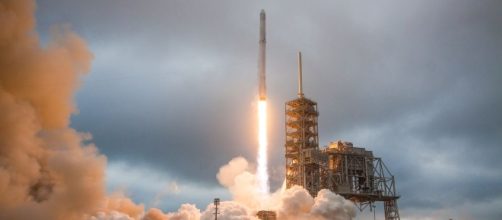The launch of a SpaceX Falcon 9 rocket carrying the EchoStar 23 communications satellite has been delayed as a result of cloudy skies and high winds in Florida on March 14, 2017. The SpaceX team had earlier planned to launch the rocket at 01.34 AM EST on Tuesday. But unfortunately, the countdown was terminated 39 minutes before the start, as the weather did not cooperate. SpaceX will next try to launch the rocket at 01.35 AM EST on March 16, 2017.
Favorable weather conditions expected on Thursday
After the launch delay, the SpaceX officials did not immediately respond regarding the next launch date.
Later, they told that the next available window for launch is on Thursday at 01.35 AM. Weather forecasters predict more than 90 percent chance of acceptable weather on Thursday.
This is for the third time that SpaceX is trying to launch a Falcon 9; earlier on September 01, 2016, a Falcon 9 along with the $200 million satellite payload was destroyed in an explosion soon after its launch from the Cape Canaveral Air Force Station.
Space X's second attempt to launch from the Kennedy Space Center Launch Complex
Falcon 9 on Pad 39A. Launch window for @EchoStar XXIII opens early tomorrow morning at 1:34am EDT. pic.twitter.com/IDMyS0IqpQ
— SpaceX (@SpaceX) March 13, 2017
After the setback faced due to the unexpected explosion on September 01, 2016, SpaceX proved their mettle by successfully launching 10 Iridium NEXT satellite telephone relay stations from the Vandenberg Air Force Base, California on January 14, 2017.
Later, from pad 39A of the Kennedy Space Center Launch Complex, SpaceX launched a space station cargo ship. With the launch of Echostar 23, SpaceX wishes to make it three in a row which is undoubtedly a milestone achievement.
Standing down due to high winds; working toward next available launch opportunity.
— SpaceX (@SpaceX) March 14, 2017
The Elon Musk owned company also has plans to launch a reused rocket for the first time by the end of April 2017. If this attempt becomes a success, then it will reshape the definition of costs associated with space travel. Earlier, SpaceX has successfully recovered rocket boosters after the launch, and now they aim to reuse launched rockets.
Last year, Elon Musk had revealed SpaceX's plans to colonize more than one million people in the red planet.

